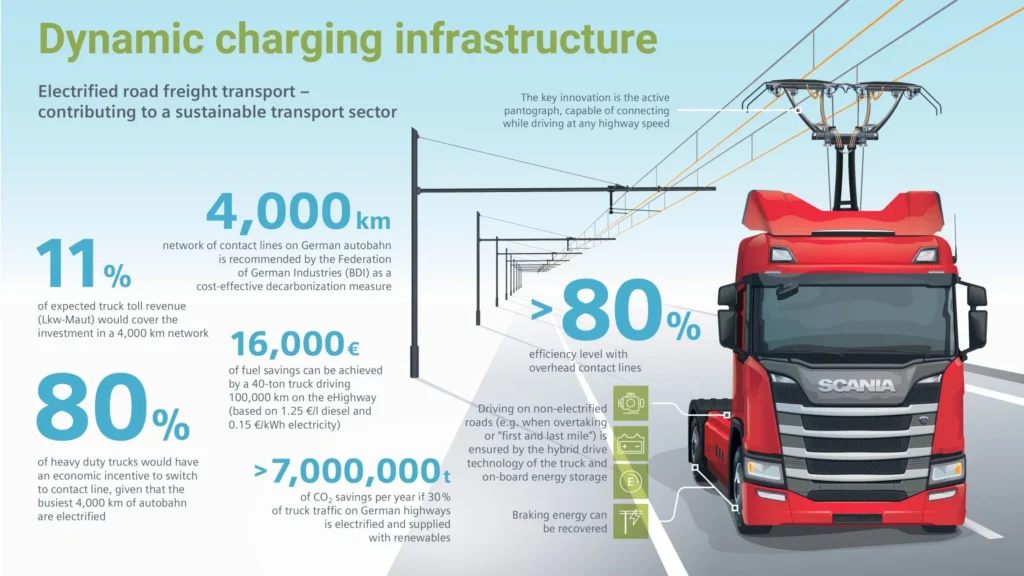From Superinnovators 10/11/23. This article is in TLDR (Too Long Didn’t Read) format which is popular in the innovation community and provides a bullet summary of information.
- Revolutionising road freight: Siemens’ eHighway is an innovative freight traffic solution that combines the efficiency of electrified railroads with the flexibility of trucks. This system is designed to be efficient, economical, and environmentally friendly.
- Timeline and development: The system has been trialled in Sweden (2016), USA (2017) and two autobahn sections in Germany have been used commercially since 2019. The latest 4km eHighway between Kuppenheim and Gaggenau (Murgtal) was completed in 2021, with testing set to continue until 2024 through the eWayBW R&D project.
- Dynamic charging mechanism: The eHighway’s core feature is its dynamic charging infrastructure. Trucks equipped with active pantographs connect to overhead contact lines, allowing them to run on electric power and charge their batteries while in motion, at speeds up to 90 km/h.
- Addressing challenges: The primary challenges the eHighway seeks to solve are the reduction of CO2 emissions and pollution in road freight transport while addressing the inefficiencies of static recharging via plugin points.
- eWayBW project: 18-kilometer-long pilot route in the Murgtal near Rastatt with four kilometers electrified. Battery electric and hybrid trucks are being tested with focus on paper freight from three manufacturers. The Fraunhofer Institute for Systems and Innovation Research leads the eWayBW research consortium.
- Quantifiable benefits: The eHighway system is not only environmentally friendly but also cost-effective. It is reported that a 40-ton truck can save approximately €20,000 in fuel costs over 100,000 km of driving, highlighting both the economic and ecological advantages of this innovation.
- Future prospects and expansion: In 2021, the German Government announced plans to install 4,000km of eHighway by 2030, with 300km by the end of 2023.

A truck connected to the overhead charging system. Credit: Siemens





